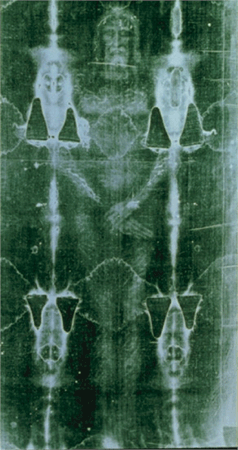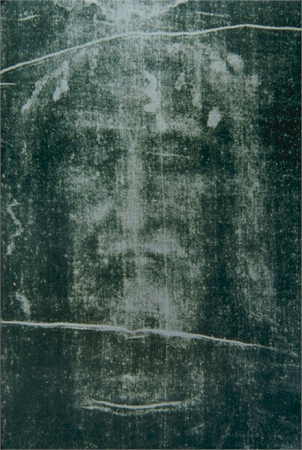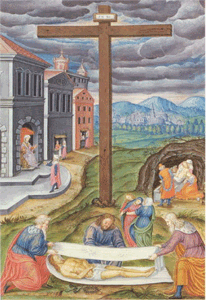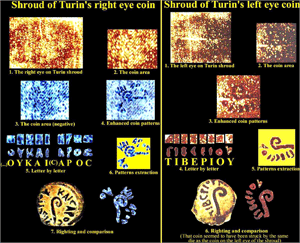
Christmas
Easter
Pentcoest
All Saints
Christ The King
Confirmation
Palm/Passion
Reformation
Stewardship
Books of the Bible
Lenten Series
Christmas Dramas
Videos
Series A - Matthew
Series B - Mark
Series C - Luke
Series D - Other
To contact
Edward F. Markquart
info@sfs.com
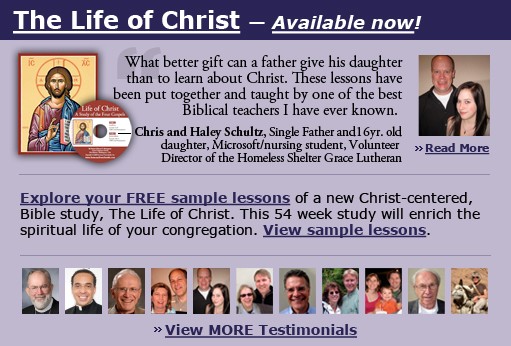
Easter John 20:1-18 The following Bible study is from a larger course entitled THE LIFE OF CHRIST: A Study in the Four Gospels. This 54 week course for the laity will be available for congregations in 2006. Basic text for the course: SYNOPSIS OF THE FOUR GOSPELS, Kurt Aland, English Edition, P. 324-328. Introductory comments about the resurrection narratives
The Apostle Paul moves from his belief in the general resurrection of the dead to the specifics of Jesus being raised from the dead by the eternal powers of the eternal God. Jesus was the first sample or example of the resurrection. Paul did not argue that the resurrection of Jesus “proved” the resurrection of the dead. Rather, it was the other way around. Believing in the resurrection, Jesus was the first fruits/example/prototype of that resurrection.
The Gospel of John: John's Story of the Resurrection The Gospel of John is the only gospel in which we have a full description of the resurrection stories. The other three gospels are more fragmented in their telling of the resurrection story, but John’s gospel gives us his complete version of these events. Earlier in this course, we have consistently said that John was a reliable and credible eyewitness who gave us numerous juicy historical details of events in Jesus’ life e.g. Jesus walking in the portico in the temple in the season of winter or the detailed description of a bowl of full of vinegar near the foot of the cross on Good Friday. John, “the other disciple,” “the beloved disciple,” was the only disciple at the crucifixion to report to us the details of that event; he was also present on Sunday morning to give us the details of the resurrection stories. It is as if we had a reporter on the scene for both Good Friday afternoon and Easter Sunday morning. That reporter’s name was John.Since John gives us the only running narrative of the resurrection stories, we will study his account as one unit. All the following stories come from the Gospel of John. We are going to study all of John’s stories together and sequentially. #352. The Women at the Tomb (only John’s version) John 20:1-13 -Early on the first day of the week, while it was still dark, Mary Magdalene came to the tomb and saw that the stone had been removed from the tomb. As was said earlier, the primary person in John’s story is Mary Magdalene who was the first person to see the Risen Christ. As John tells the story about that first Easter morning, it seems that Mary Magdalene was all alone, but on careful reading of the next verse, we discover that she had unnamed women friends with her. Mary Magdalene’s name is mentioned in Luke 8:2 as a person who had seven demons. She is mentioned again in the crucifixion and resurrection stories. All other innuendoes about Mary Magdalene’s personality (e.g. a prostitute, etc.) are based on hypothetical conjecture with no Biblical support. -So she ran and went to Simon Peter and the other disciple, the one whom Jesus loved, In the resurrection stories, several women run to tell the news; in the Gospel of John, Mary Magdalene specifically ran to tell Peter and John. Once again, John is not named but is the “beloved disciple,” the disciple whom Jesus loved. -And said to them, ‘They have taken the Lord out of the tomb, and we do not know where they have laid him.’ Mary knew that the tomb was empty and she assumed that someone had taken the body. Perhaps it was the Jewish guards. Perhaps it was the gardener. Perhaps it was the Jewish leaders who were trying to play some kind of perverse trick. Perhaps it was some unidentified grave robbers who stole the body and created one of the greatest hoaxes in human history. Unobtrusively, Mary calls Jesus, “Lord.” During his lifetime, the disciples called Jesus “Lord.” During the resurrection stories, we will hear that title often. The Apostle John wants us to call Jesus “Lord” as well. -Then Peter and the other disciple set out and went toward the tomb. The two were running together. Peter and John set out immediately to find out what was going on, only knowing that the tomb was empty and perhaps someone had stolen the body. Soon, if not immediately, the two of them were running. You can feel the intensity of adrenalin within them as the two of them ran together. Again, the Gospel of John gives us juicy little details e.g. both John and Peter were running together. -But the other disciple outran Peter and reached the tomb first. This is a nice detail that John gives us. According to tradition, John was the youngest disciple and outran the older fisherman, Simon Peter. -He bent down to look in and saw the linen wrappings lying there, but he did not go in. John got there first. This story is consistent in all the versions about the disciples “stooping” to look in. That is, the disciples had to stoop or bend down to look into the tomb. In all the modern pictures of Jesus’ tomb today, there is a tall, normal doorway that people walk into, but the Scriptures are consistent that the disciples had to stoop to get into Jesus’ grave. Raymond Brown’s commentary tells us that archeological studies of gravesites reveal a three-foot high door into a cave-like tomb. John saw the linen wrappings. Some people suggest those linen wrappings were none other than the famous Shroud of Turin. (See the appendix of this lesson for a discussion of the shroud.) -Then Simon Peter came, following him, and went into the tomb. Like always, Peter took the initiative and boldly entered the tomb. He entered before young John. - He saw the linen wrappings lying there, and the cloth/napkin that had been on Jesus’ head, not lying with the linen wrappings but rolled up in a place by itself. The details are so specific, and we are accustomed to that from John. There have been numerous occasions in the Gospel of John where John has been our reporter at the scene and has given us the juicy little details. Like a detective, John gives us a detailed report e.g. the presence of the empty shroud. The shroud was a long sheet of linen that had been wrapped around Jesus’ body. Also present was the linen napkin that had been covering his face. The detective- author records for us still another precise detail: the linen napkin that had covered Jesus’ face was rolled up and sitting neatly in a place by itself. It is as if John was a “still life” portrait painter and he painted for us this sacred scene inside the tomb where Jesus’ dead body had been laid. It was as if miraculously, Jesus had gotten up and lifted the linen napkin off from his face and then neatly rolled that linen cloth up into a roll like a rolled napkin on a dinner table. As with many scenes from John’s gospel, John was like a sharp-eyed detective or an observant artist in his minute descriptions. Or else he was conning us by giving us all these juicy historical details to create the appearance and illusion of historical authenticity. If that is true, then John was a deceptive liar who was bent on tricking the world into believing Jesus had been raised from the dead. It seems that the reader has a choice: either John the Apostle was accurately reporting the detailed events of Jesus’ life, Good Friday and Easter or he was a deceptive fabricator of historical details in order to create the illusion of historical authenticity. -Then the other disciple, who reached the tomb first, also went in, and he saw and believed; John saw and believed. This is the first instance of a person believing in the Risen Christ. Sixty five times in John’s gospel, we invited to believe in Christ. The number one quality of a disciple is to believe in Christ. Throughout the gospel and the story of Jesus, John wants us to believe in this Jesus who turns water into wine and heals the sick. But this is the first story about the Risen Christ where a person comes to believe. And the person who firsts believes is none other than John himself. Without seeing the Risen Christ, without seeing his risen body or the nail prints in his hands or the cut in his side, John believed. -For as yet they did not understand the Scripture, that he must rise from the dead. John believed even before the disciples remembered and understood what Jesus had said about himself that he was going to be raised from the dead by the powers of God. -Then the disciples returned to their homes. We don’t know where their homes were. Luke had told us that Peter went home after seeing the linen cloths and was amazed at what he saw. It was as if the linen clothes were clues that something really big had happened and they were just about to discover what it was. #353. The Women at the Tomb (John’s version) John 20:14-18 -But Mary stood weeping outside the tomb. This is Mary Magdalene and we can easily imagine that she was weeping. Not only had her Lord been brutally beaten, scourged and crucified, but now she thought that someone had stolen his body. Mary would have been numb and devastated by the unfolding painful events of the past few days. -As she wept, she bent over to look into the tomb; Once again, she bent over. She was crying, with a deep sorrow that swept through her inner heart. It must have been too much for her, seeing the execution of Jesus and then thinking that someone had stolen the body. Things had gone from awful to worse than awful. -And she saw two angels in white, sitting where the body of Jesus had been lying, one at the head and the other at the feet. At this point in the story, there is no mention of the linen clothing neatly lying there, but rather the focus is on two angels, sitting where the body of Jesus had been lying. Again, the description is very detailed. That is, one angel was sitting where Jesus’ head had been; another angel was seated at his feet. -They said to her, ‘Woman, why are you weeping?’ That is always an important question to all human beings who grieve at the death of their loved ones. Why are we weeping at the death of our mother, father, child or spouse? Are we weeping for the deceased? For the family? For ourselves? -She said to them, ‘They have taken away my Lord, and I do not know where they have laid him.’ Mary assumes that someone has stolen the body and she doesn’t know who it was. The “they” seems be the chief priests and others who had plotted Jesus’ execution. Such people, Mary may have assumed, would have stolen his body away as well. Mary Magdalen calls Jesus “my Lord” and her Lord’s body was gone, presumably stolen. Circle the word, “my” and focus on that simple word. We are going to see the little word, “my,” three times in John’s resurrection stories. “Your Father and my Father.” “You are my Lord and my God.” Mary Magdalene had this close relationship to Jesus in that she simply called him “my Lord” and John wants us to call Jesus “my Lord” as well. -When she had said this, she turned around and saw Jesus standing there, but she did not know that it was Jesus. Why did she not recognize Jesus? We do not know. But we are often in the same situation: Jesus is standing near us and we do not recognize him. We will find the same theme later in the Gospel of John during Jesus’ third resurrection appearance on the Sea of Tiberias when the disciples did not immediately recognize the true identity of Jesus. This same theme also occurs in the Gospel of Luke when the men on the road to Emmaus also did not recognize the true identity of Jesus. -Jesus said to her, ‘Woman, why are you weeping? Whom are you looking for?’ The Risen Christ, unknown to Mary, asks two important questions for Mary Magdalene and for us as well. “Why are you weeping, _______?” And you insert your own name. For me personally, “Why are you weeping, Edward? Why are you weeping at the grave of your mother, your father, your cousin, your good friend” Jesus asks all of us the same questions. Jesus asks another question of us, “Whom are you looking for?” “Whom are you looking for, ______?” And you insert your own name in that blank. That also is a question that Jesus often asks of us: “Who are we looking for? What are we looking for?” So often in life, we seem to be driven by some inner forces. Jesus makes up stop and asks of each one of us, “What are you really looking for?” -Supposing him to be the gardener, she said to him, ‘Sir, if you have carried him away, tell me where you have laid him, and I will take him away.’ Mary assumes that perhaps Jesus was the gardener of this new garden and perhaps the gardener may have taken the body of Jesus and laid it someplace else. Centuries later, as we consider what happened to the body of Jesus, many people have conjectures about what possibly may have happened to the stolen body. They think to themselves:
Sometimes in our lives of doubting and questioning, we become detectives who wonder perhaps if someone stole the body from the grave. “The gardener” is one possible answer. -Jesus said to her, ‘Mary!’ The Risen Christ calls Mary by her personal name. She freezes with recognition. Someday, the Risen Christ will call us by our personal name, and we will hear his voice and we too will be stunned with elation…that all these beliefs about eternal life and the resurrection and immortality are true. There is that day when God will call us by name and we will know for sure that Jesus Christ is the resurrection and the life and that whoever lives and believes in him will never die. -She turned and said to him in Hebrew, ‘Rabboni!’ (which means Teacher). Teacher. She called him, “Teacher.” Jesus had been teaching Mary her whole life. Teaching about the kingdom. Teaching about the abundant life. Teaching about eternal life. Teaching about love of God and neighbor. Teaching about the Father and we are his children. Teaching that he would suffer, die and be raised on the third day. There was so much that Mary had learned from Jesus, the Teacher. -Jesus said to her, ‘Do not hold on to me, because I have not yet ascended to the Father. Mary was not to hold onto the Risen Christ. We are not sure why. In the next story, doubting Thomas will be asked to touch Jesus’ hands and side. It seems that Mary wanted to embrace and hold on to the Risen Christ who had been through so much suffering. It seems that Mary Magdalene wanted to hold on to that special occasion with the Risen Christ, to prolong that sacred event and bask in that heavenly moment of resurrection. The Greek word for “hold on to” is “aptesthai” which means “to hold, grasp, or cling.” (Brown, V. 2, p. 992). That Greek word was used in Luke 7:14 which is the story about the raising of the widow’s son from the dead. Jesus “touched” the coffin and said to the young man, “Young man, get up.” Jesus touched or held onto the coffin of the widow’s son. For centuries, scholars have argued about the inconsistency of the Risen Christ telling Mary Magdalene not to “hold on to” him and in the next resurrection appearance, the Risen Christ telling Thomas to “touch” him and his wounds. Raymond Brown, in his classic commentary, mentions “twelve different types of explanation.” (Brown, JOHN, V. 2, p. 992) None of those explanations are satisfactory or make sense to the reader. I would like to offer the thirteenth interpretation of this event. As a pastoral interpreter of this incident, it seems to me that Mary Magdalene wanted to hold on to the Risen Christ, to hold on to that sacred moment, to prolong this resurrection bliss. Jesus said to her, “Don’t hang on to me. I have more work that needs to be done. Don’t constrain me. I need to appear to the other disciples, to give the Holy Spirit and send out the disciples, to appear to Thomas, and ascend to the Father.” It seems as if Mary Magdalene wanted to hold on to her sacred moment with the Risen Christ and prolong her heavenly joy. Jesus gently chided her and said, “Don’t hold me. Don’t confine me. I have more work that needs to be done.” In Jesus’ second resurrection appearance in the Gospel of John, (the appearance to Mary Magdalene being the first), the Risen Christ next appeared to his ten disciples without Thomas and then to the eleven disciples with Thomas. The primary issue in this second resurrection appearance was doubt. It was good old fashioned, basic human doubt, and the disciples had plenty of it. It wasn’t that the disciples wanted to prolong their heavenly resurrection ecstasy like Mary Magdalene did because these doubting disciples were not sure if Jesus was real in the first place. Mary Magdalene had not been wrestling with such “gut level” doubt as the other disciples were. The other disciples needed to see, touch and feel the reality of Jesus’ body and flesh, that the Risen Christ was not a vision or a hallucination. So Jesus addressed the disciples’ real needs and had his disciples touch, see and feel his wounds. Mary didn’t have those deepest doubts that the disciples did. She did not need to see, feel and touch in order to be convinced that Jesus was alive and real. In a whole different direction, Dan Brown has written an enormously popular novel entitled, THE DA VINCI CODE in which “an ancient secret” was finally revealed. What was the ancient secret? That Jesus and Mary Magdalene were lovers, that they were husband and wife, that they had a biological child, that Jesus Christ was not really divine but fully a human, that Mary Magdalene was the human foundation of the church and not Simon Peter, that the Church has been trying to squelch the primacy of Mary Magdalene, etc. etc. etc. A good historian does not take this novel as a serious piece of historical research but understands what the book is: a finely crafted novel that keeps the reader in suspense for 600 pages. There is no historical credulity for Dan Brown’s implied assertions about Jesus and Mary Magdalene, that they were lovers, that they were husband and wife, and that Mary Magdalene wanted to physically embrace Jesus because of her deep emotional and physical love for him. -But go to my brothers and say to them, “I am ascending to my Father and your Father, to my God and your God.”’ Throughout his teachings during his lifetime, Jesus had taught that God was his Father and our Father, and this was one of the most seminal, creative, ingenious and revelatory teachings of Jesus. Some scholars say that Jesus’ teachings about “abba”, “papa,” and the nearness and intimacy with God as our heavenly Father are the primary teachings of Jesus. “My Father and your Father; my God and your God.” These are the heart of Jesus’ teachings. Jesus foretold that he was ascending to his Father, from whom he came in the first place. -Mary Magdalene went and announced to the disciples, ‘I have seen the Lord’; and she told them that he had said these things to her. Whoa!!! Wow!!! Mary had seen the Risen Lord and knew it and believed it. She then found the disciples and told them what she had seen and heard. She reported the message that Jesus had spoken to her: that is, Jesus was going to ascend to the Father, to her Father and his Father. Mary, a woman, was the first person to see the Risen Christ. In a world in which women were considered property and had no legal rights; in a world in which women were considered possessions, chattel, and material goods, the role of women was transformed by the attitudes and teachings of Jesus. The stories of the woman at the well and Mary and Martha reveal Jesus’ positive attitudes and actions to women. Mary Magdalene was the first person to see the Risen Christ and she was a woman. A woman first saw the Risen Christ. In this significant and historically accurate gesture, the New Testament elevated the status of women. Shortly, we will study Luke’s account of the resurrection and that a group of women first experienced the empty tomb. We will remember that Luke’s gospel records several positive stories about women of faith. THE SHROUD This linen shroud became one of the most famous religious relics in the Catholic Church. “The shroud is about fourteen feet in length and less than four feet wide. Stains on the cloth possess the quality of a photographic negative; and when photographed, they yield a positive image of a human form. A medical analysis has led some to conclude that for a few days only the Shroud was folded lengthwise over a body that had been buried with aloes—a body that had been scourged, crowned with thorns, pieced with nails as in crucifixion and had the heart opened after death. The lineage of the Shroud can be traced back to 1353 and the church of Lirey in Troyes, France, but we hear of a similar shroud in a century earlier in Constantinople. … There is really no ancient papyrus support for understanding the term to refer to strips of cloth and there is no evidence that the Jews wrapped their corpses with bands or similar strips to those used by Egyptian mummies.” (Brown, JOHN, V. 2, p. 942.) It is important to read the above paragraph from Raymond Brown’s commentary on John because Brown has proved to be balanced and brilliant in all of his research. Next, we are going to study the Shroud of Turin via its “official website” and we expect that such a website would emphasize the consistencies about the Shroud rather than the inconsistencies. Brown gives us a more neutral analysis of the Shroud. Take time and examine the images of the Shroud of Turin. Go to the following sections and read carefully: Shroud of Turin, Positive and Negative of Face and Body. Notice that the images of the shroud are three-dimensional. Notice the white marks which are blood. Notice the location of the white marks/the blood marks e.g. on the top of the forehead, the left wrist and the right chest wall. Remember that no one knew how to paint dimensional images in the 1300 CE. Question are persistently asked e.g. “How did all this stuff get on the Shroud? The three dimensional image? The wounds in the right places? The blood? The coins over the eyes of the dead man? How did these precise and detailed images get onto this piece of cloth?”
THE WAY THE BODY OF JESUS WOULD HAVE BEEN LAYED WITHIN THE SHROUD. The following is an Renaissance painting by Gerolama della Rovere
THE COINS OVER THE EYES OF THE BODY
"The Man was buried at the time of Pontius Pilate and Tiberius Caesar: Recent 3-dimensional computer enhancements have revealed over the right eye and left eyebrow of the Man of the Shroud traces of two small coins, placed there perhaps to keep the eyelids closed. One is a lituus with the figure of a curved staff-coined by Pilate in 29 A.D. On the coin over the right eyelid signs identify with a Tiberius Caesar coin." http://www.pilatecoins.com/coins_on_turin_shroud.htm
THE FACE OF JESUS WHEN RECONSTRUCTED BASED ON THE SHROUD.
SOME “FACTS” ABOUT THE SHROUD BASED ON ITS “OFFICIAL” WEBSITE
DISCUSSION QUESTIONS: WHAT DO YOU THINK ABOUT THE SHROUD AND WHY? DOES THE SHROUD PLAY ANY IMPORTANCE IN YOUR BELIEFS ABOUT JESUS’ RESURRECTION? Some answers to the above questions from one class: (Shown after the class discussion has taken place.)
The Shroud |
